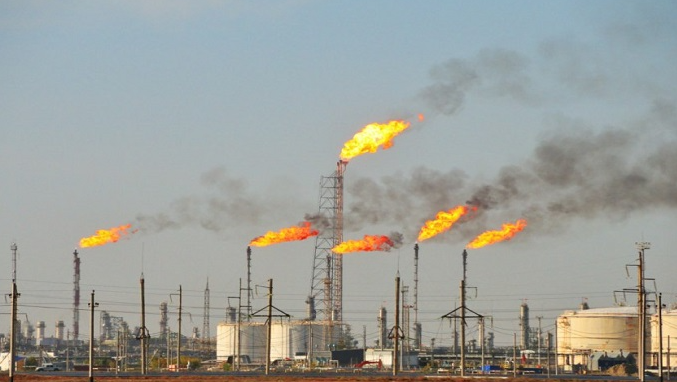In the October 2023 edition of the “Imperative of Cutting Methane from Fossil Fuels” report published by the International Energy Agency (IEA), it was revealed that Nigeria is taking bold steps to address the critical issues of gas flaring and methane emissions. The nation has set ambitious targets to bring about a significant reduction in these harmful environmental practices.
This initiative aligns with the global transition towards cleaner energy sources and the urgent need to reduce fossil fuel consumption and associated emissions, all while ensuring the availability of consistent energy services.
The IEA’s report highlights Nigeria’s commitment to mitigating the adverse environmental impacts of its energy sector. Nigeria has introduced emissions management guidelines specifically designed for the upstream oil and gas sector. These guidelines are part of a broader mission, which is twofold: to completely eliminate routine gas flaring by 2030 and concurrently achieve a substantial 60% reduction in fugitive methane emissions by 2031.

The guidelines issued by the Nigerian Upstream Petroleum Regulatory Commission (NUPRC) in November 2022 underscore the government’s determination to implement measures that effectively address greenhouse gas emissions in the oil and gas sector. The primary goal of these guidelines is to minimize environmental and social consequences, curtail the wastage of natural resources, and align with Nigeria’s emissions reduction objectives.
One of the key provisions in these guidelines is the requirement for operators in the upstream oil and gas sector to develop and submit greenhouse gas (GHG) management plans within six months of the legislation taking effect. These plans must comprehensively cover inventories of emission sources, establish accounting methods, and set timelines for achieving net-zero emissions. This is a significant step toward ensuring that emissions from the sector are effectively managed and reduced.
Furthermore, the guidelines also include provisions for Leak Detection and Repair (LDAR). Operators are mandated to conduct regular inspections using approved methods like optical gas imaging. The inspection schedule prescribes one inspection in the first year, two inspections in the second year, and four inspections in subsequent years. In the event of leaks, operators are required to promptly address large leaks within five working days and small leaks within 14 working days. Additionally, operators must maintain meticulous records of their LDAR equipment and inspection reports, all under the oversight of the Commission, which will issue certificates to demonstrate compliance.
In terms of Flare Requirements, the guidelines mandate that unlit flares venting gas must be rectified within 48 hours. Flare tips exhibiting sputtering or smoking should either be replaced within two years of guideline implementation or within 60 days after the second year of inspection. These provisions ensure that flare emissions are minimized and brought under control, contributing to the broader goal of reducing gas flaring in the industry.
The urgency of addressing methane emissions from the oil and gas sector is driven by a growing global demand for cleaner energy sources and a corresponding decrease in fossil fuel consumption. The IEA’s report underscores that the demand for oil and natural gas is projected to decline significantly, with an expected drop of nearly 80% from 2022 to 2050. Similarly, coal demand is anticipated to plummet by over 90%. Consequently, methane emissions from fossil fuels, which amounted to approximately 120 million metric tons in 2022, are expected to decrease to 85 million metric tons by 2030 and further drop to 20 million metric tons by 2050. This represents an impressive approximately 85% reduction compared to 2022 levels.
Notably, these reductions are expected to occur even without specific targeted efforts to mitigate methane emissions, primarily due to the reduced production and consumption of fossil fuels. However, it is essential to emphasize that despite these anticipated reductions, without focused actions to curtail methane emissions originating from fossil fuel operations, the global average surface temperature is predicted to surpass a 1.6°C increase by 2050. Such a substantial rise in temperature significantly heightens the risk of climate-related damages and the potential crossing of irreversible climate tipping points, underscoring the urgent need for concerted efforts to mitigate methane emissions and combat climate change.
In conclusion, Nigeria’s commitment to reducing gas flaring and methane emissions is a significant step forward in aligning with global efforts to combat climate change and promote sustainable energy practices. The introduction of emissions management guidelines for the upstream oil and gas sector, as well as specific provisions for greenhouse gas management, leak detection and repair, and flare requirements, demonstrates the government’s dedication to addressing environmental concerns associated with the energy sector. As the world transitions to cleaner energy sources, Nigeria’s efforts to reduce emissions and minimize the environmental impact of its energy production are both commendable and essential for the long-term well-being of the planet. It is imperative for nations worldwide to take similar steps to ensure a sustainable and environmentally responsible energy future.
Support InfoStride News' Credible Journalism: Only credible journalism can guarantee a fair, accountable and transparent society, including democracy and government. It involves a lot of efforts and money. We need your support. Click here to Donate
